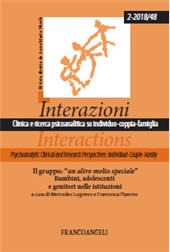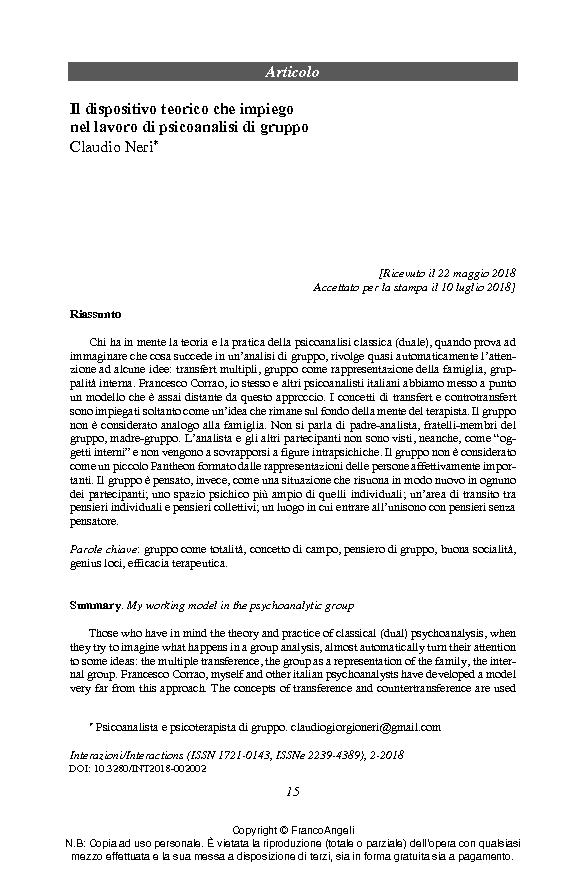Il dispositivo teorico che impiego nel lavoro di psicoanalisi di gruppo
15-23 p.
Chi ha in mente la teoria e la pratica della psicoanalisi classica (duale), quando prova ad immaginare che cosa succede in un'analisi di gruppo, rivolge quasi automaticamente l'attenzione ad alcune idee: transfert multipli, gruppo come rappresentazione della famiglia, gruppalità interna. Francesco Corrao, io stesso e altri psicoanalisti italiani abbiamo messo a punto un modello che è assai distante da questo approccio. I concetti di transfert e contro-transfert sono impiegati soltanto come un'idea che rimane sul fondo della mente del terapista. Il gruppo non è considerato analogo alla famiglia. Non si parla di padre-analista, fratelli-membri del gruppo, madre-gruppo. L'analista e gli altri partecipanti non sono visti, neanche, come "oggetti interni" e non vengono a sovrapporsi a figure intrapsichiche.
Il gruppo non è considerato come un piccolo Pantheon formato dalle rappresentazioni delle persone affettivamente importanti. Il gruppo è pensato, invece, come una situazione che risuona in modo nuovo in ognuno.dei partecipanti; uno spazio psichico più ampio di quelli individuali; un'area di transito tra pensieri individuali e pensieri collettivi; un luogo in cui entrare all'unisono con pensieri senza pensatore. [Testo dell'editore].
Those who have in mind the theory and practice of classical (dual) psychoanalysis, when they try to imagine what happens in a group analysis, almost automatically turn their attention to some ideas: the multiple transference, the group as a representation of the family, the internal group. Francesco Corrao, myself and other italian psychoanalysts have developed a model very far from this approach. The concepts of transference and countertransference are used only as an idea that remains in the background. The group is not considered analogous to the family. The therapist does not speak of a father-analyst, brothers-members of the group, mother-group. The analyst and the other participants are not even seen as "internal objects" and do not overlap with intrapsychic figures. The group is not considered a small Pantheon composed of representations of the most important people in childhood.
Instead, the group is thought of as a situation that resounds in a new way in each of the participants; a psychic space wider than the individual ones; an area of transit between individual thoughts and collective thoughts; a place where you could enter in unison with thoughts without a thinker. [Publisher's text].
Ist Teil von
Interazioni : clinica e ricerca psicoanalitica su individuo-coppia-famiglia : 48, 2, 2018-
Artikel aus derselben Ausgabe (einzeln erhältlich)
-
Informationen
ISSN: 2239-4389
KEYWORDS
- Gruppo come totalità, concetto di campo, pensiero di gruppo, buona socialità, genius loci, efficacia terapeutica
- Group as a whole, the field, group thinking, genius loci, good sociability, therapeutic efficacy



